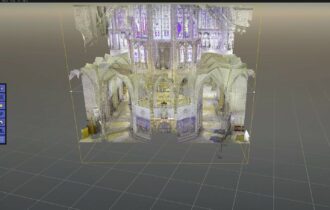
Extended Reality for Industry 4.0
We are in the midst of the fourth industrial revolution, or Industry 4.0, which implies a change in the way of using productive means thanks to the introduction of technology.
This can improve the efficiency, productivity, quality, and safety of industrial processes, and the extended reality is essential to facilitate this path toward the digitization of industry. We explain how and which are the most widespread use cases.
What is Augmented Reality in Industry 4.0?
The use of augmented reality in Industry 4.0 has been boosted by the accessibility of data and the momentum of smart factories based on IoT or big data.
Augmented reality broadens users’ perception and maximizes their experience and interaction with information. In fact, it has the potential to actively contribute to the success of the digital transformation of this sector.
Studies such as “Augmented Reality in Manufacturing Industry” show that this technology improves performance by up to 50%, speeding up industrial operations or reducing errors.
Applications of virtual reality and augmented reality in Industry 4.0
Some companies are still skeptical about introducing this technology into their processes, but the potential is so great that it is already being applied to improve many areas of industry. We have compiled a few examples:
Support for complex assembly tasks
Augmented and virtual reality technologies help simplify complex tasks like assembly line assembly.
Now there are new assembly instructions, and products have become more complicated to assemble, but technology makes the information easily accessible and visible. It is also beneficial because operators can have their hands accessible without stopping to get the information.
It is even more helpful in areas where the assembly is carried out in large dimensions, such as in the aerospace sector. They use projectors to show the exact position of the individual parts.
Simplification of maintenance processes
The maintenance of production facilities is a critical factor in a company. With this technology, the comparison of targets and results can be performed in parallel on an augmented reality display.
Mixed reality glasses make it easy for maintenance technicians to access relevant information, compare with virtual models and perform maintenance hands-free. In fact, you can do it remotely, following all the necessary inspection steps through the device.
Improved customer relations
Very much in line with the above, these applications can be transferred to customer support.
Mixed reality facilitates their advice and allows for better visualization of products, individual components, systems, etc.
Thus, customers can see how a product will work, its actual dimensions, and how it would look in a particular location or make changes before the process starts.
Ensures safety
This is also an area where mixed reality can be of great use. It shows employees what potential hazards they could face or emergency exit routes.
It is no longer necessary to use a map, as they would now have a great visual aid to show safety measures in a real environment, which translates into faster and more agile action in case of an emergency.
New ways to training
Immersive technologies facilitate access to expert knowledge, making coordinating and performing maintenance and service work more effortless.
It also breaks down the personnel gap that many companies face. They no longer need to have experts available internally: they can be called on externally, wherever they are.
Experts can guide employees in transferring the necessary knowledge.
Quality improvement
Virtual models of products or components can also improve their quality in a real environment, as the original model is compared with the virtual one through superimposition.
If there are deviations from the manufacturer’s specifications or changes are needed, they can be marked directly on this virtual model, which radically shortens the inspection of the virtual model.
In an increasingly connected industry, there are various processes where extended reality can help, such as in manufacturing, factory planning, or customer contact.
We have listed some of its advantages and use cases, but they must be adapted to the requirements of each company. If you need us to help you in this process, don’t hesitate to contact the Evergine team!


